This is the theme that came second (together with ‘DT & Skulls’) in our latest poll – at the bottom of this post. The winning theme, ‘DT & Shadows’, featured in the previous post, and in that I already announced that I would post the second ranked themes without a new poll. So now for ‘DT & Shoes’. By the way, I’m using “shoes” in a wide sense to include boots, trainers, stilettos, etc. as well as regular shoes.
What do you first think of when contemplating where shoes and dark tourism meet? For many people it will probably be this:
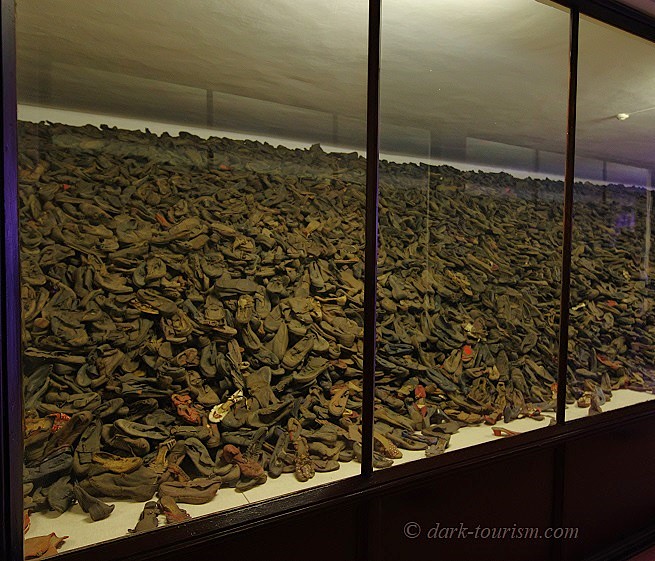
This is the infamous mound of victims’ shoes on display in a huge display case in the museum of Auschwitz in Poland. These amassed shoes have become almost as iconic for Auschwitz as that ‘Arbeit macht frei’ sign.
But Auschwitz is not the only place where such amassed victims’ shoes are on display. Here’s the equivalent at Majdanek:
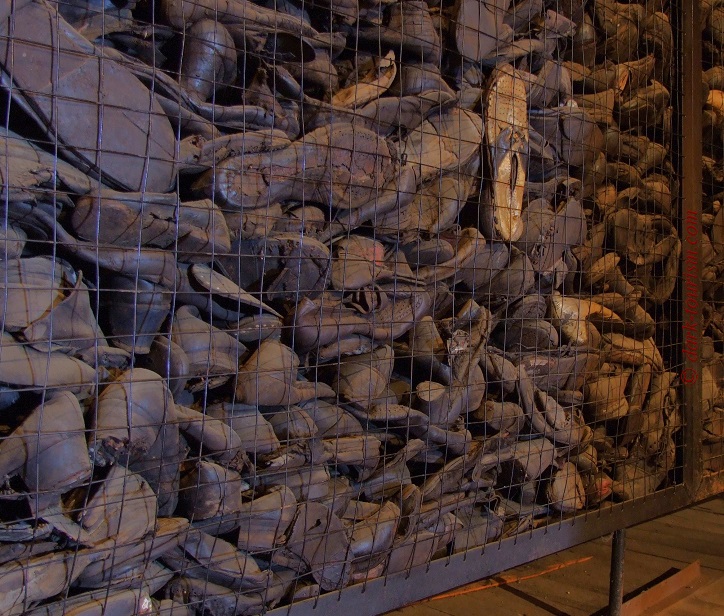
Here the shoes are stacked high inside wire mesh cages, as it were. Although these days, as I’ve read in this recent book, the shoes are behind perspex panes … apparently because before this protective measure was taken some people managed to steal individual shoes (who would do such a thing?!?).
While such amassed shoes sort of symbolize the individuality that the Holocaust victims were also deprived of, on top of losing their lives and dignity, sometimes an individual pair of shoes can have a stronger impact as an exhibit, such as these tiny baby shoes contrasting with a big pair of men’s shoes:
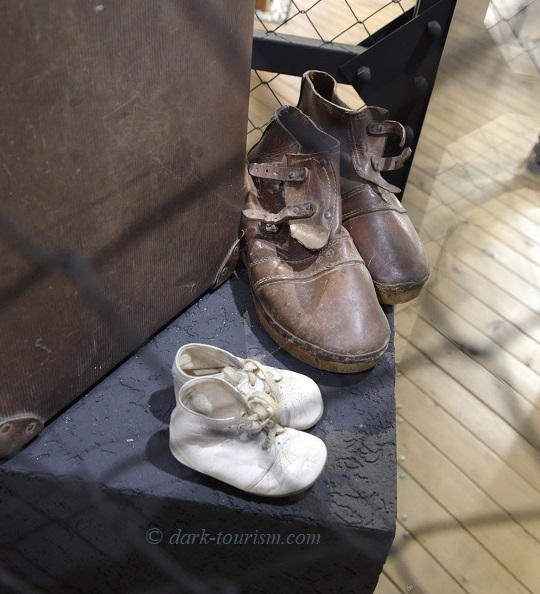
This is an exhibit I found at the Sered Holocaust Memorial in Slovakia, which was a less well known labour/concentration camp during WWII.
At a better known concentration camp memorial, namely at Ravensbrück, the main exhibition has a single shoe on display:
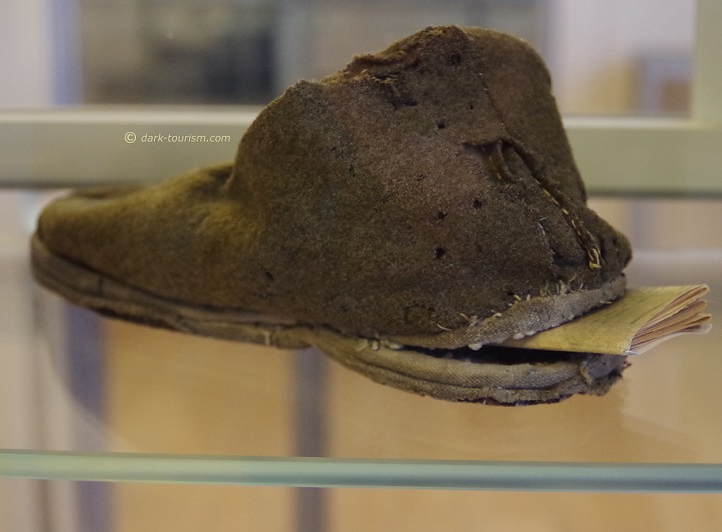
This shoe, or rather its heel, was used by an inmate for hiding illicit papers … successfully, as they survived beyond the liberation of the camp.
Another more positive Holocaust-and-shoes story came with this display at the Melbourne Holocaust Museum, Australia:
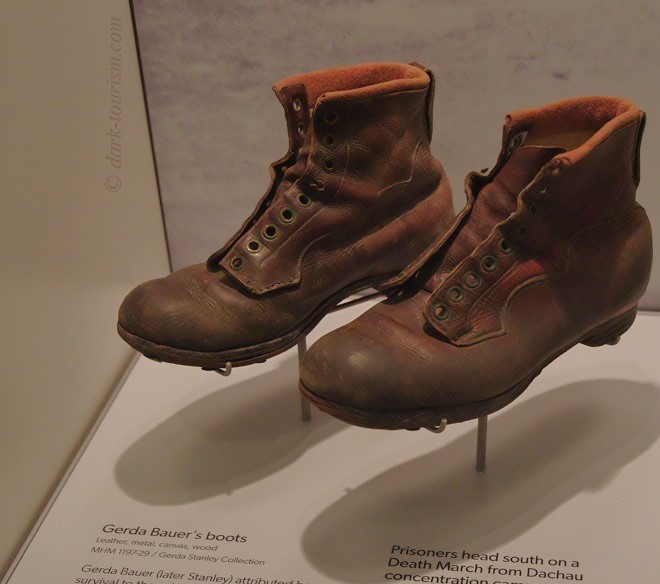
These sturdy boots belonged to a female inmate (at Dachau, I believe) and proved instrumental in her survival on the death march that came with the liquidation of the camp at the end of the Nazi reign.
One final shoes-and-the-Holocaust photo – one that should be familiar to readers of this Blog from a recent post (as well as this older one) – is this:
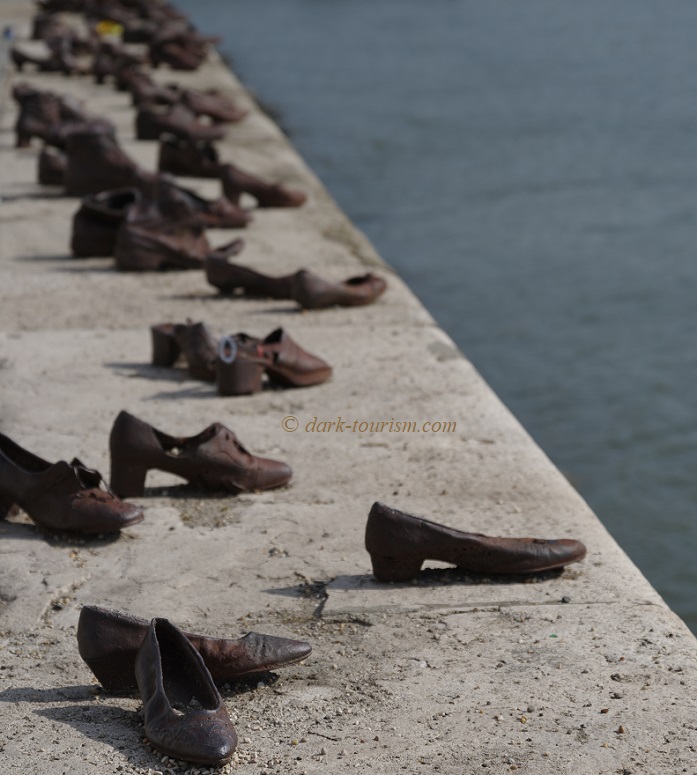
This is the ‘Shot into the Danube’ monument in Budapest. It symbolizes the massacres of Jews by the Hungarian ‘Arrow Cross’ Nazis, who lined up their victims on the banks of the Danube River, ordered them to take off their shoes (because they were a valuable commodity) and then shot them down and let the river’s current carry the dead bodies away. The monument consists of scores of metal shoes fixed to the stone embankment – but unfortunately many people don’t realize what this work of art stands for, going by plenty of thoughtlessly disrespectful behaviour I witnessed there. In their defence, however, it has to be noted that the plaque explaining the monument’s meaning is set back from it by a few metres and can thus be easily overlooked.
Moving on from the Holocaust and to the gulags of the Soviet Union, here’s a photo taken in 2017 at the Perm-36 gulag memorial in Russia, featuring felt boots that inmates wore to help with the often bitter cold conditions they had to endure in winter:
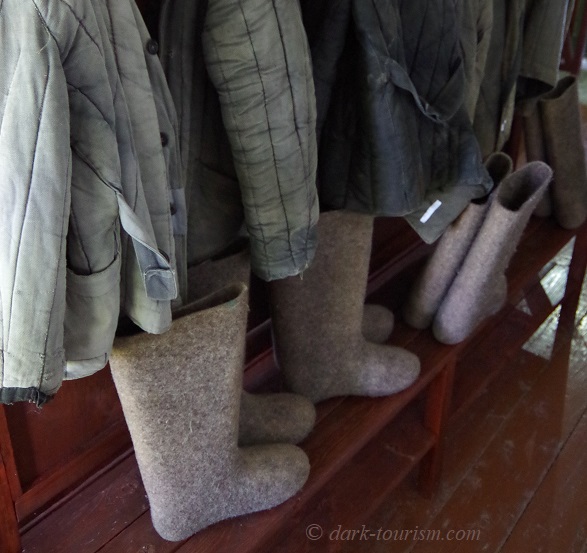
Another very dark chapter in the history of the late Soviet Union was of course the Chernobyl nuclear disaster. But it later gave us dark tourists a travel destination like no other, the one I personally ranked as my No. 1 dark destination in the world! Lamentably, though, since the beginning of Putin’s war of aggression against Ukraine, this destination has no longer been accessible and it remains to be seen whether it will ever open to tourism again, and if so in what form. What I experienced on my three visits to Chernobyl will most likely be history.
Here’s a photo I took on my very first visit to Chernobyl back in 2006 (i.e. before I had even started dark-tourism.com and in fact hadn’t even heard of the term ‘dark tourism’ yet). It shows a pair of boots in the middle of the main square of the ghost town of Pripyat (probably not left behind but placed there for atmospheric effect, which I then tried to enhance further by making it a black-and-white shot):
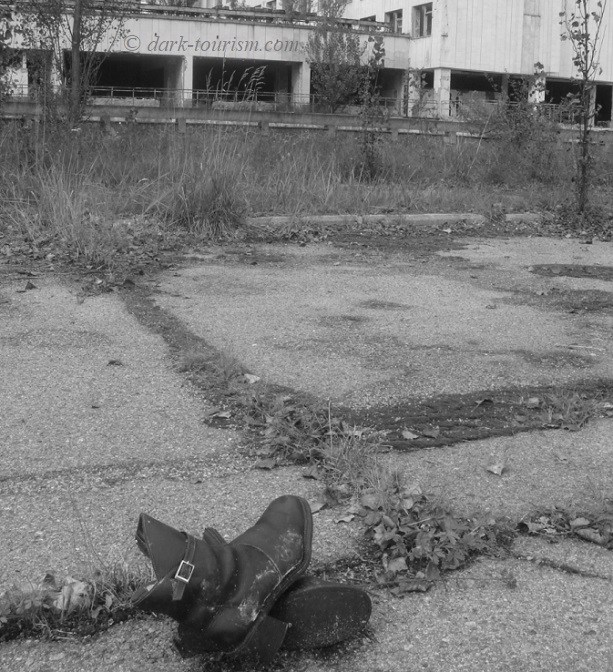
On my second, longer visit to Chernobyl in May 2015 I came across this pair of women’s shoes left behind inside one of the abandoned buildings in Pripyat (same photo as the featured one at the top of this post):
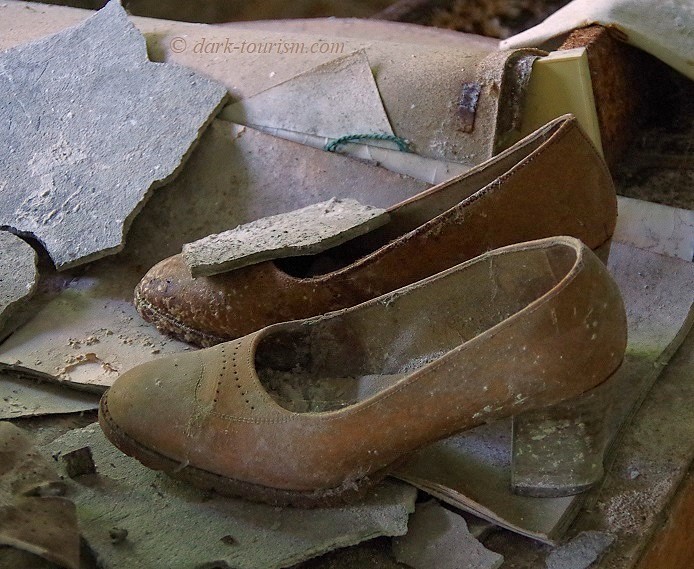
On my third visit to Chernobyl in November 2018, together with a German journalist working for the SPIEGEL, our private guide also took us to a kindergarten in the small village of Kopachi that is not so far from the disaster NPP. Here I came across this little toddler’s shoe:
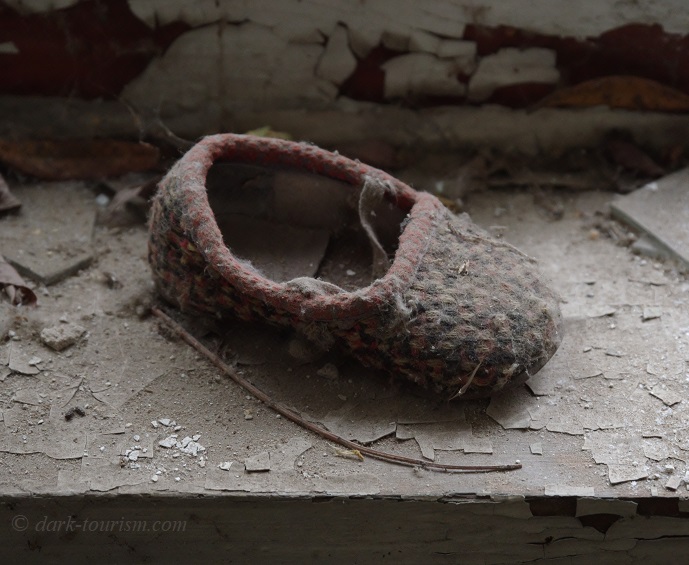
While Chernobyl remains the worst (civilian) nuclear disaster (yet), a close second was Fukushima in Japan, which was in fact shaken by a triple disaster: first a massive earthquake, second a deadly tsunami triggered by the quake, and third the nuclear disaster at the Fukushima-Daiichi NPP that resulted from the tsunami, which rendered the back-up generators and cooling pumps useless. When I toured the area with a specially licensed guide in April 2019, we came to a house destroyed by the tsunami in which some shelves still had neat rows of shoes on them:
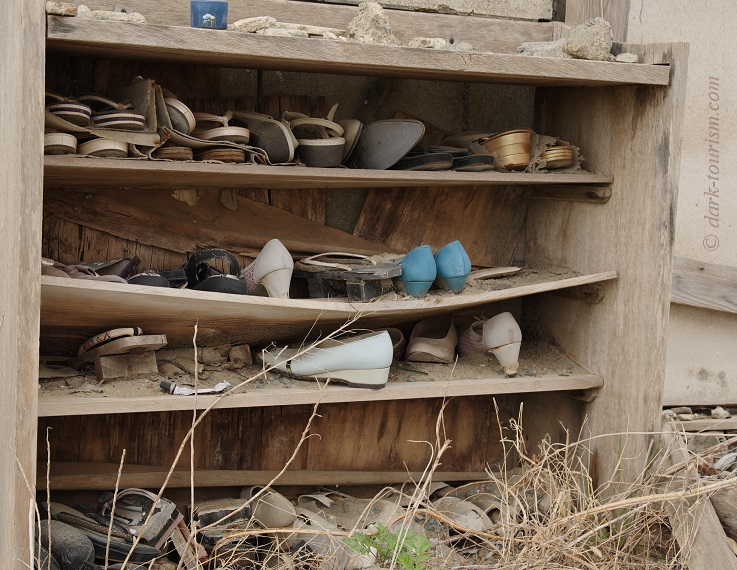
Next we’re back to museum pieces, in this case involving a pair of stilettos worn by a 9/11 victim. They later became an exhibit at the then “Tribute WTC” (now renamed “9/11 Tribute Museum”) in New York City:
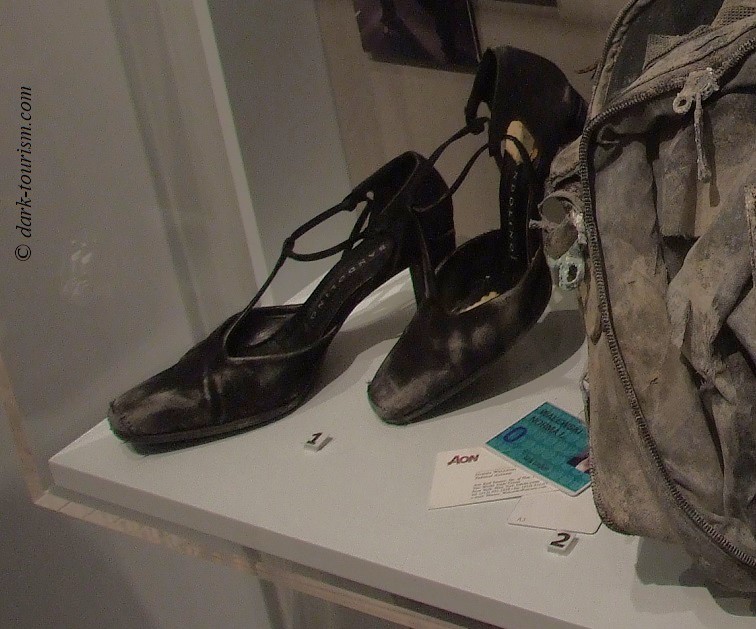
Also a museum piece these days is this pair of ballet shoes:
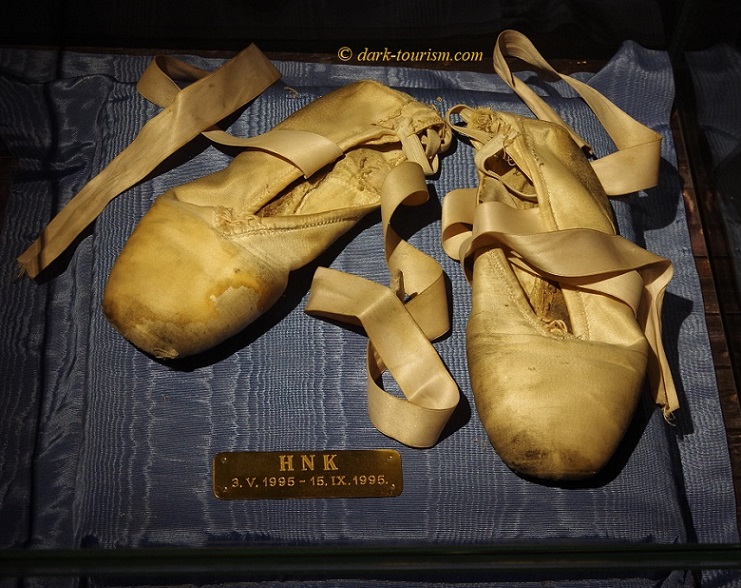
These were worn by the prima ballerina of the Croatian National Theatre when that building came under missile attack by Serb Krajina militias in May 1995. The shoes are now on display at the Memorial Centre in the heart of Zagreb, the capital of Croatia.
Not really dark, but perhaps at least potentially so, are these diver’s boots I found on display in a hotel in Ålesund in Norway:
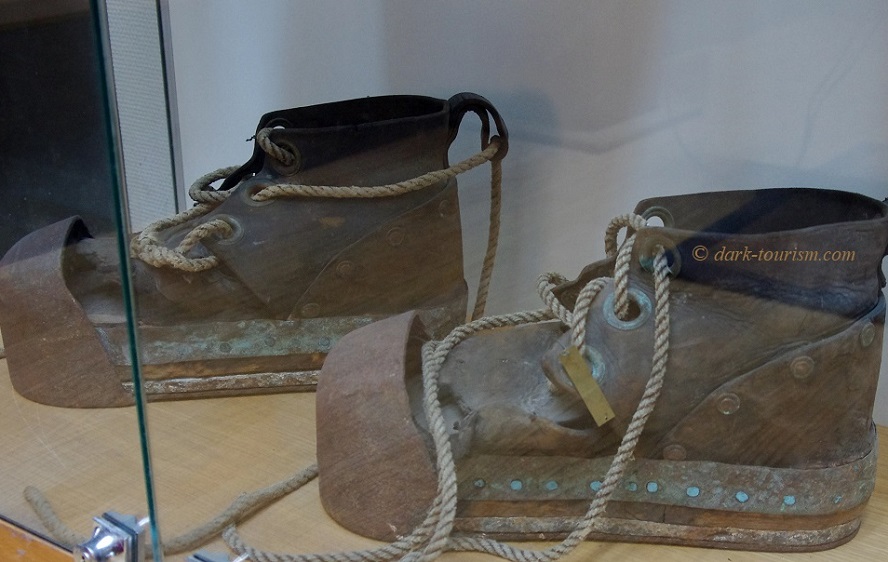
Only fictionally dark are the next two pairs of shoes, on display at the German Spy Museum in Berlin:
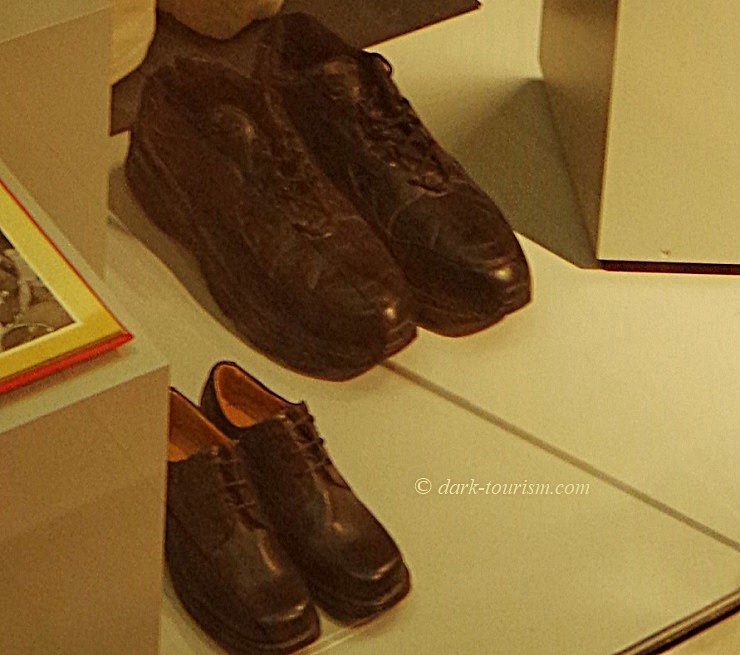
This display is part of a section on James Bond and the various “villains” he had to deal with in his movies. The oversized pair of shoes was worn by the actor who played the villain henchman “Jaws” (who was over seven foot tall, 2.17m) and the tiny shoes belonged to the actor who played a midget counterpart “Nick Nack” (who was only 3’11 feet / 119cm short).
Next up are some shoes that I spotted in a shop window in Bulgaria, and if I remember correctly they were quite expensive. They are what I would call prototypical “pimp shoes”:
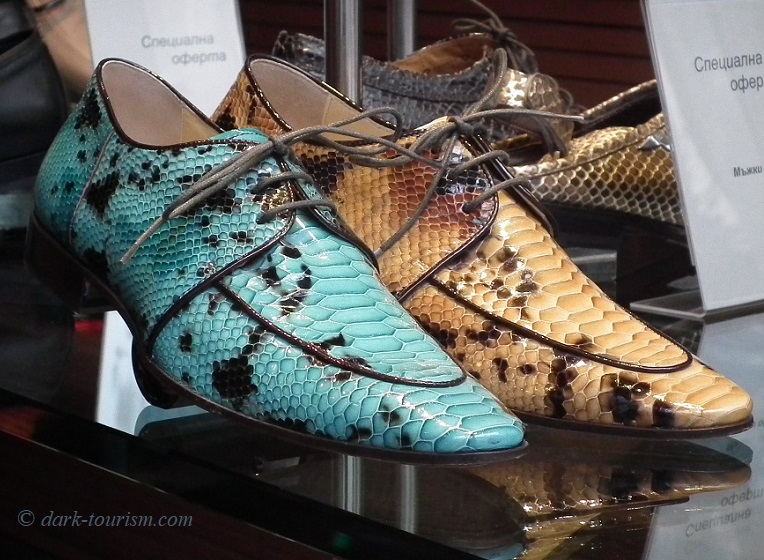
Not dark at all, except for the location I saw them in, is this pair of trainers worn in the steppes by a Kazakh marathon runner. They’re on display at the regional museum of Ekibastuz in north-eastern Kazakhstan:
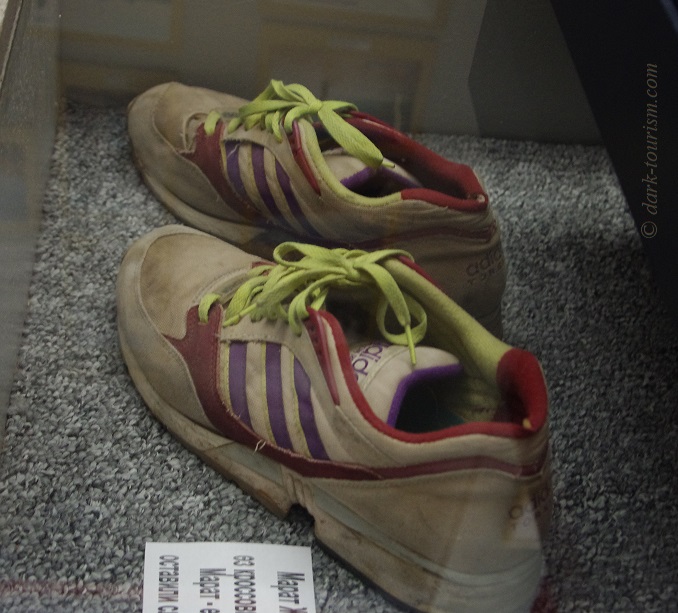
And now I can even feature shoes I was wearing myself. In the next photo I’m wearing my regular shoes inside overshoes fashioned from the lower part of wellington boots, with a plastic shoe cover in between:
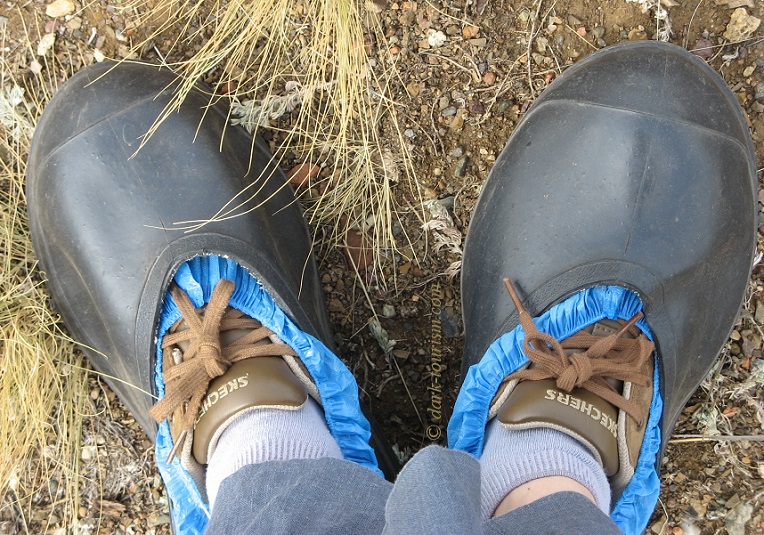
The overshoes were a protective measure provided by my guide for when we walked around in the Polygon (at the former Semipalatinsk Test Site, STS, in Kazakhstan, where the majority of the Soviet nuclear tests were conducted). That way I wouldn’t have picked up any irradiated particles on the soles of my own shoes. That was the theory at least. In practice I found it difficult to walk in the overshoes and they repeatedly fell off. Oh well, the radiation levels at the old STS weren’t actually that bad, going by our driver’s dosimeter readings.
Next you see my hiking boots covered in mud from the hike up to Karisoke, the place in the Virunga Mountains in Rwanda where the famous mountain gorilla researcher Dian Fossey had her base:
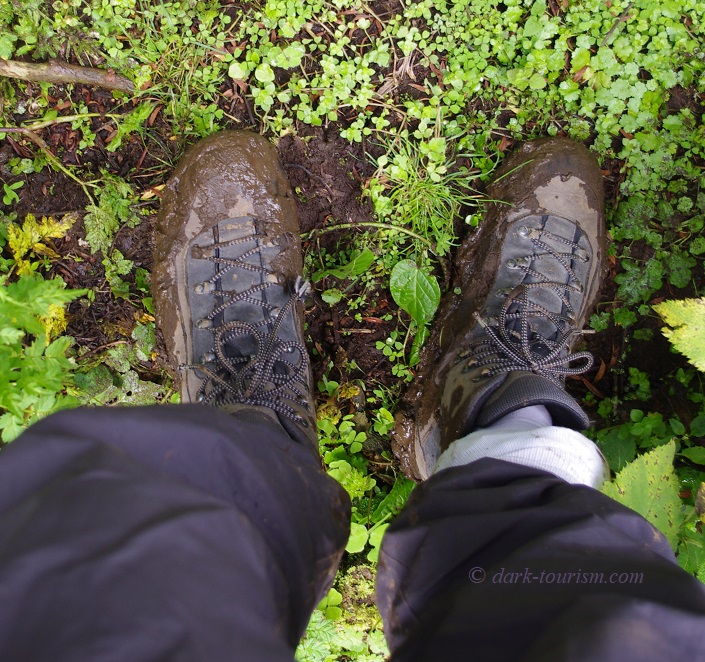
The Karisoke site is also the place where Fossey was murdered under mysterious circumstances in 1985. She is buried there as well – in a grave next to that of her favourite gorilla Digit who had been killed a few years previously by poachers. So it is quite a dark place. Getting there requires a long, strenuous hike up a jungle-covered mountainside. But I found it well worth the effort. It was a real pilgrimage.
Finally, in this last photo there’s only one of my hiking boots in the frame – placed right next to a huge paw print of a male tiger, spotted in India’s Satpura National Park on a safari on foot (and by boat):
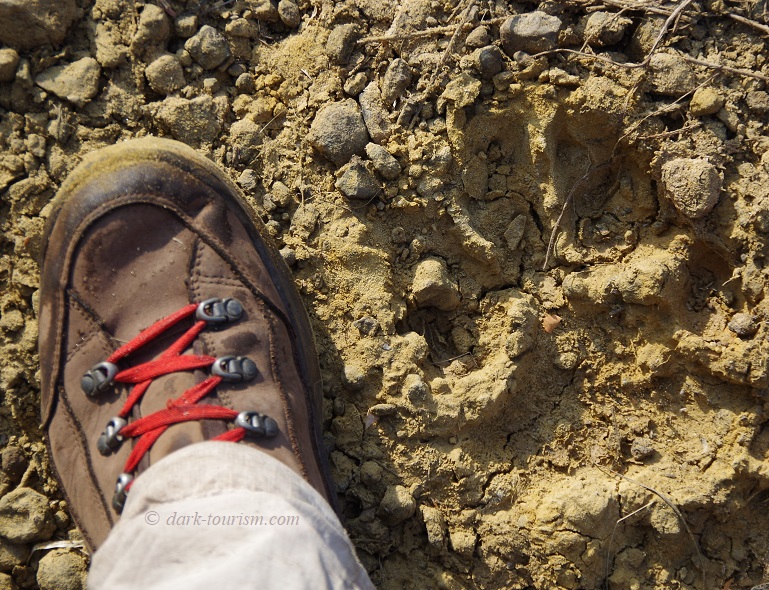
But with that I shall come to a close. I hope you enjoyed this unusual theme and the photos. The theme “DT & Skulls” will come next, unless I slot in a different topic first.

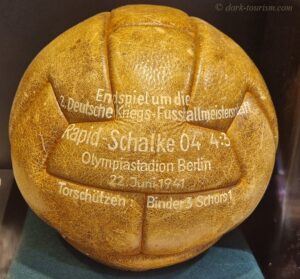
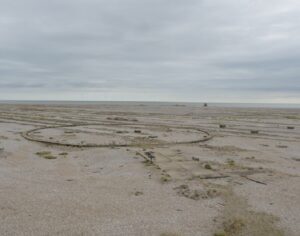
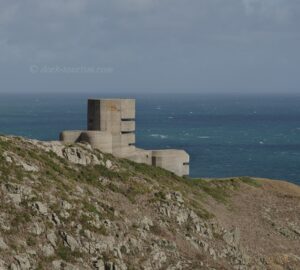
4 responses
Thanks Peter. Great post !!!
thanks – glad you liked it!
Interesting post – thank you!
thanks!